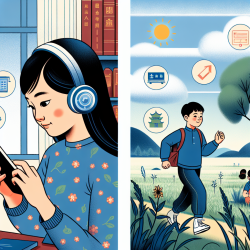The balance between screen time and outdoor activities is a topic of increasing interest among educators and parents alike. A recent study titled The Association Between Screen Time and Outdoor Time on Adolescent Mental Health and Academic Performance: Evidence from Rural China offers valuable insights into how these activities impact adolescent development. This blog explores the key findings of the study and provides practical recommendations for practitioners looking to enhance their skills in supporting student well-being and academic success.
The Study at a Glance
Conducted in rural China, the study examined how adolescents allocate their free time between screen-based activities and outdoor play. Researchers utilized a large sample size of over 20,000 junior high school students to assess the impact of these activities on mental health and academic performance. The findings revealed nuanced relationships between screen time, outdoor activities, and adolescent outcomes.
Key Findings
- Screen Time: Moderate screen time (up to 2 hours per day) was positively associated with better academic performance, particularly in standardized math scores. However, excessive screen time (>2 hours) was linked to increased behavioral difficulties.
- Outdoor Activities: Any amount of outdoor activity was associated with improved mental health outcomes. Adolescents who spent more time outdoors reported fewer behavioral difficulties and better prosocial behaviors.
- No Significant Link: The study found no significant association between outdoor time and academic performance, suggesting that while outdoor activities benefit mental health, they may not directly enhance academic outcomes.
Practical Implications for Practitioners
The findings from this study provide actionable insights for educators and therapists working with adolescents:
- Encourage Balanced Screen Time: Promote moderate screen usage that supports learning and creativity. Encourage activities that engage students actively rather than passively consuming content.
- Integrate Outdoor Activities: Facilitate opportunities for students to engage in outdoor play. This can be achieved through structured physical education programs or unstructured playtime during recess.
- Monitor Excessive Usage: Be vigilant about students who exceed recommended screen time limits. Implement strategies to reduce excessive usage that may contribute to mental health challenges.
Encouraging Further Research
This study highlights the need for further research into how different types of screen and outdoor activities impact adolescent development. Practitioners are encouraged to explore these dynamics within their own educational settings to tailor interventions that meet the unique needs of their students.
To read the original research paper, please follow this link: The Association Between Screen Time and Outdoor Time on Adolescent Mental Health and Academic Performance: Evidence from Rural China.










